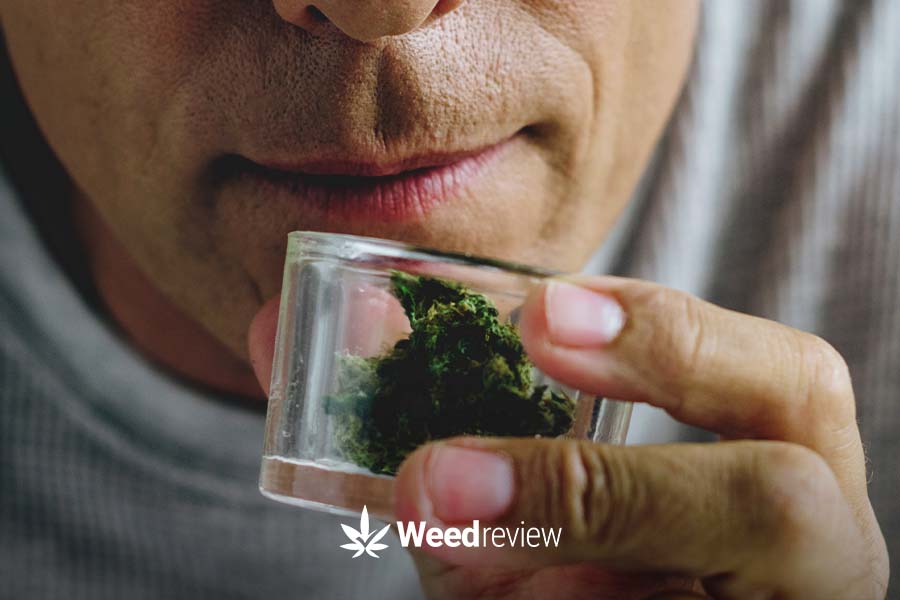
Cannabis Tolerance: What is it, How Does it Happen, and Taking T-Break

Table of Contents
Cannabis has a long history of being used for recreational and medicinal purposes. It offers an array of effects, ranging from relaxation and euphoria to pain relief and stress management.
Yet, the more frequently and heavily you use cannabis, the more your body becomes used to its effects. This phenomenon, known as cannabis tolerance, can affect your experience. As you build a tolerance to marijuana, you will need to take more of it to feel the same effects.
Let’s delve deeper into marijuana tolerance, how it occurs, and how you can manage it with T-breaks.
What is tolerance?
Tolerance refers to a reduction in the body’s response to a drug after repeated use.
In simpler terms, you need more substance to achieve the same effects you once did with smaller amounts. The same principle applies to cannabis.
If you’ve found yourself needing to consume more weed to reach the same level of high or relief as before, you’ve developed a tolerance to cannabis.
How does marijuana tolerance occur?
Cannabis tolerance primarily occurs due to the behaviour of the body’s endocannabinoid system (ECS).
The ECS has cannabinoids produced by the body and two main types of receptors: CB1 and CB2.
Delta-9-tetrahydrocannabinol (THC), the primary psychoactive compound in cannabis, produces its effects by binding to these receptors.

The action is more prominent with the CB1 receptors, which are present in the brain and central nervous system; this is what makes the effect of THC so noticeable.
Frequent and heavy use of marijuana leads to two things:
- Over time, your brain adapts by reducing the number and sensitivity of these CB1 receptors – a process known as downregulation. Your body becomes used to weed; while THC still binds to the receptors, the impact is not as strong as before. Think of this as drinking alcohol daily: your first time, two beers would have given a good buzz, but after one month of frequent use, you need six to seven beers to experience the same effects.
- There is another thing happening at the same time – called receptor internalisation. Here, the overwhelmed CB1 receptors not only become less responsive, but some of them get absorbed or “internalised” into the cells, making them inaccessible for THC to bind to.
This combination of downregulation and internalisation leads to a reduced response to cannabis. In other words, when you take weed, the THC does not have enough receptors to bind with and produce its effects. The effects are weak.
You have to take more marijuana to achieve the same results. Your body has become desensitised to weed. This marks the start of cannabis tolerance and, possibly, cannabis dependence.
It is worth noting that, unlike THC, CBD does not have the same tolerance patterns. People do not build tolerance to CBD in the same way.
Over time, with sustained abstinence, these processes are reversed, a phenomenon called upregulation, where the CB1 receptors regain their normal density and sensitivity, and the internalised receptors return to the cell surface. This is why taking a “T-break” or tolerance break can effectively reset your tolerance to cannabis.
How long does it take to build tolerance?
Research suggests that heavy cannabis users develop tolerance within 3 days to 2 weeks of continuous use.
The timeline to build cannabis tolerance can vary widely among people, largely due to factors such as:
- Frequency and quantity of use
- Metabolism and genetics
- The potency of the cannabis strains
Taking a T-break: Reducing your tolerance
Tolerance breaks, also known as T-breaks, mean taking a break from using cannabis for a while. This break allows your body to reset its response to THC. Your receptors return to normal during this time, and the accumulated cannabinoids leave your body.

How much time do you need to reduce your tolerance? Just stopping weed use for 48-72 hours can reset your receptors greatly.
A complete reset can take anywhere from 7 days to 45 days or more. It depends on whether you want to thoroughly flush weed from your system or get your tolerance back up.
The time it takes to achieve this sensitivity reset varies from person to person, depending on how quickly THC is cleared from their body and the strength and quantity of cannabis they’ve been using.
You may also experience withdrawal symptoms such as irritability, anxiety, or insomnia during this time.
If you take medical cannabis, please speak to a doctor for the best action.
How to reduce your tolerance to weed?
There are a few things you can do to improve your T-break experience.
- Plan your break: A T-break can last anywhere from a few days to a few weeks, depending on your tolerance level. The idea is to give your body time to recover and restore the cannabinoid receptors to their normal state.
- Gradually reduce your use: If a complete break seems too difficult, try microdosing. Instead of smoking a full joint, smoke just a quarter, and reduce it gradually.
- Try detox remedies: Good nutrition, exercise, and therapy are 3 of the many things you can do to perform a cannabis detox.
- Find alternatives: Find other activities to occupy your time and help distract from cravings. This could be reading a book, taking a walk, or engaging in a hobby.
- Rely on friends & family: Stopping weed use is one part of the equation. The other part is managing the withdrawal symptoms. Having a social support system can help you get through the T-break better.
Benefits of Taking a Tolerance Break
- Improved mental clarity: Some users report that they experience clearer thinking and improved memory during a T-break.
- Drop in expenses: With a decrease in use comes a decrease in expenses. Taking a T-break can lead to notable cost savings if you’re a heavy user.
- Better sleep: It might sound counterintuitive, especially if you’ve been using weed as a sleep aid, but many users find that their sleep quality improves over the course of their T-break.
- Increased effectiveness: Post a T-break, you may find that you require smaller amounts of cannabis to achieve the same desired effects, thus increasing the effectiveness of your use.
Drawbacks of taking a tolerance break
- Withdrawal symptoms: Depending on the frequency and amount of your consumption, you may experience withdrawal symptoms during a T-break, including irritability, insomnia, and restlessness.
- Discomfort: If you’ve been using cannabis to manage medical symptoms like pain, nausea, or anxiety, taking a T-break may result in the temporary return of these symptoms.
- Difficulty coping: For many, cannabis is a relaxation and stress management tool. So, a T-break may require finding new coping mechanisms for a short while.
- Cravings: You might experience strong urges or cravings to take cannabis during your break.
Conclusion
Cannabis tolerance is a common experience among frequent and heavy users. Understanding the science behind it and identifying the signs – where you need more weed to experience the same high – can help you maximise your cannabis use.
Tolerance breaks require discipline and patience. They can ultimately enhance your cannabis experience and help maintain its effectiveness in the long run. That said, abstinence from weed can be challenging and lead to withdrawal symptoms.
Always remember the key to a beneficial relationship with cannabis lies in balance and mindful usage.


